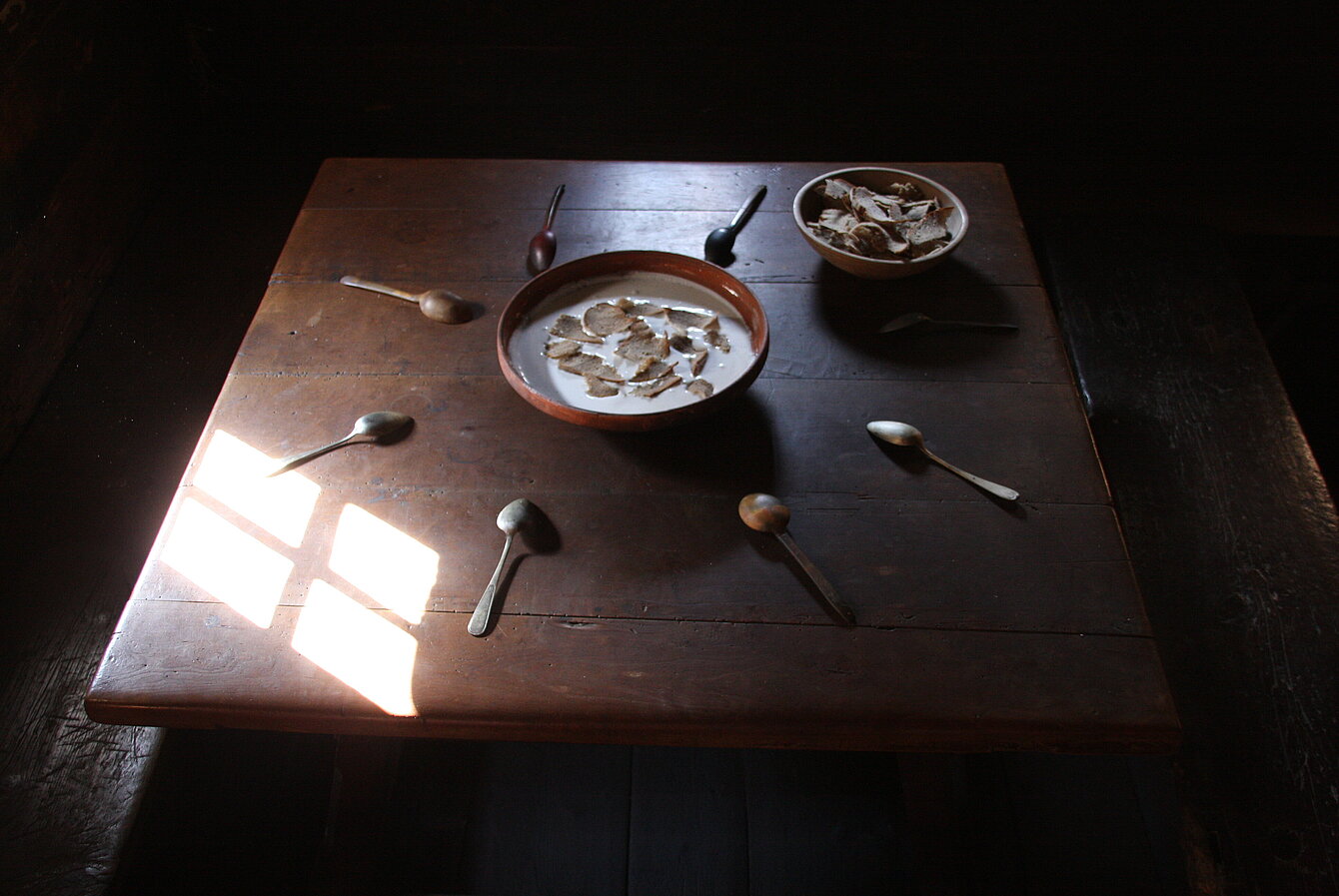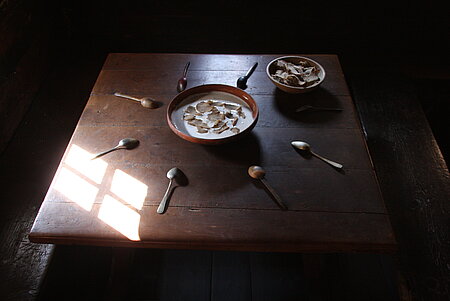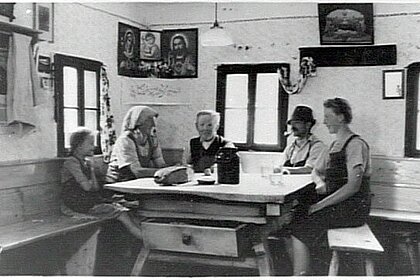Western Austria was a cooker region. The fire burned openly on the hob and required constant handling. Food was cooked, fried or baked in hot water (harbour) or hot fat (pan). Prior to the introduction of the cooker, no baked goods were known here apart from bread, which was only baked in the stone oven a few times a year. All other baked goods were lard-based pastries such as doughnuts, strauben, various types of pasta, etc. The cooking utensils were firebugs, tripods, kettles and pans. The cooker consumed a lot of wood, but allowed for quicker and more manoeuvrable use of the firing process.
Eastern Austria was regarded as an oven region. Food was usually cooked inside the oven. The food ingredients had to be placed in the oven ready for cooking, and it was no longer possible to handle them during the cooking process. The oven was a food preparation area, but not a cooking area. The cooking area was a fire bench attached to the box-shaped oven body. Water-cooked dough dishes were hardly ever used here. Typical oven baked dishes were sterz, strudel, pastries etc. The oven saved fuel, stored heat for a longer period of time and protected the house and neighbourhood from outbreaks of fire. The cooking utensils were the oven fork, the oven trolley, jugs and pots.
























